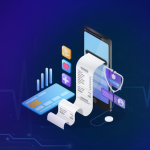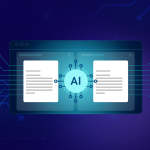2025 Clinic Tech Stack: Custom Software & Development Solutions to Stay Ahead
- TronsIT Solutions
- 0 Comments
Healthcare software development in 2025 isn’t just about digitizing records or booking appointments online—it’s a full-blown digital transformation. As clinics, hospitals, and health startups scramble to meet rising patient expectations and complex compliance demands, the right tech stack is becoming a make-or-break element for success.
In this article, we delve into the top tech components that shape modern clinics. From AI-powered automation to secure cloud platforms and IoT-powered patient care, here’s your all-in-one guide to custom software and development solutions that’ll help you stay lightyears ahead in the healthcare game.
Why a Modern Tech Stack Matters More Than Ever
Let’s face it: the old-school way of managing clinics just doesn’t cut it anymore. Patients want faster service, seamless digital experiences, and better outcomes. On the other hand, healthcare providers require secure, interoperable systems that minimize burnout and errors.
So, what is the solution?
A well-built tech stack allows clinics to:
- Improve operational efficiency
- Enhance patient communication
- Ensure HIPAA & GDPR compliance
- Provide remote care via telemedicine
- Make smarter decisions through data analytics
And guess what? The demand for tailored technology is only growing.
1. Cloud-Native Infrastructure is the New Gold Standard
Say goodbye to clunky, on-site servers. In 2025, clinics are increasingly adopting cloud-native platforms due to their flexibility, scalability, and security features. Platforms like Microsoft Azure and AWS are now optimized for healthcare data, offering built-in compliance tools and encrypted storage.
Benefits of cloud-first development:
- Real-time data access from any device
- Disaster recovery and automatic backups
- Easy integration with external systems (like pharmacies or labs)
- Enhanced collaboration across care teams
2. Artificial Intelligence is Revolutionizing Diagnostics & Operations
AI isn’t just a buzzword anymore—it’s an everyday tool in modern clinics. From chatbots handling appointment bookings to AI-driven imaging tools aiding faster diagnoses, artificial intelligence is now deeply embedded in healthcare processes.
Here are a few real-world AI applications:
- Natural Language Processing (NLP) for patient notes
- Predictive analytics for chronic disease management
- Automated triage systems in emergency care
- AI-driven virtual assistants for mental health support
One standout example? AI-based radiology tools can identify anomalies in X-rays with an accuracy of 94% or higher, according to a 2025 Stanford HealthTech study.

3. Interoperability is Finally Here—and It’s Changing the Game
For years, data silos have plagued healthcare providers. However, thanks to initiatives like FHIR (Fast Healthcare Interoperability Resources) and APIs built into modern Electronic Medical Record (EMR) platforms, clinics can now securely and efficiently share data across systems.
What does that mean to you?
- Smoother patient referrals and transitions of care
- Enhanced communication between primary care and specialists
- Aggregated data for population health insights
Clinical software solutions that embrace interoperability are poised to lead the industry by breaking barriers and enabling real-time collaboration.
4. The Internet of Medical Things (IoMT) is Making Care More Personalized
The rise in wearables and connected devices—such as smartwatches, glucose monitors, and remote ECG sensors—has led to a surge in data breaches. In 2025, clinics will integrate these devices into their workflows, offering personalized care based on real-time vital signs.
Examples include:
- Remote Patient Monitoring (RPM) platforms
- Smart infusion pumps with dosage alerts
- IoMT dashboards that track patient trends over time
Not only does this improve patient outcomes, but it also reduces hospital readmissions—a win-win situation!
5. Cybersecurity Isn’t Optional—It’s Mission Critical
With more data floating around than ever, clinics have become prime targets for cyber threats. In 2025, top-performing clinics are investing heavily in cybersecurity frameworks, including:
- Multi-factor authentication (MFA)
- Endpoint detection and response (EDR)
- Blockchain-powered health record protection
- Real-time breach monitoring systems
HIPAA fines are no joke, and neither is the reputational damage from a data breach. A proactive security strategy is now a core part of every clinic’s tech stack.
6. Custom-Built Applications Provide the Competitive Edge
While off-the-shelf software gets the job done, custom healthcare applications are where the magic happens. These tailor-made tools can be designed to meet specific workflow needs, integrate seamlessly with existing systems, and evolve in tandem with your clinic.
Why clinics are investing in custom builds:
- Greater control over features and functionality
- Faster onboarding for staff
- Improved patient satisfaction with personalized experiences
- Scalability for future growth
Think patient portals with multilingual support, custom dashboards for performance metrics, or telehealth platforms that integrate seamlessly into EHR systems. The possibilities are endless—and the ROI speaks for itself.
Wrapping It Up: Tech that Works for You
The 2025 clinic tech stack isn’t about chasing shiny objects—it’s about building a future-ready foundation that supports care delivery, boosts performance, and keeps your patients happy. Whether you’re a small practice or a multi-location clinic, the time to upgrade your digital game is now.
Partnering with the right development team is the first step. TronsIT Solutions specializes in creating secure, scalable, and fully integrated systems tailored to modern healthcare needs. From clinical dashboards to patient portals and AI diagnostics, they’ve got you covered.
For more information, explore our website!
Related Posts
TronsIT Solutions’ Software Excellence: Driving KSA’s Digital Future in 2025
- TronsIT Solutions
- February 3, 2025
In a world increasingly driven by using virtual Innovation, the need for transformative solutio ..
Web Development for Patient Portals: UX and Security Essentials
- TronsIT Solutions
- July 1, 2025
Healthcare is no longer confined to hospitals and clinics. In 2025, patient portals will be at ..



